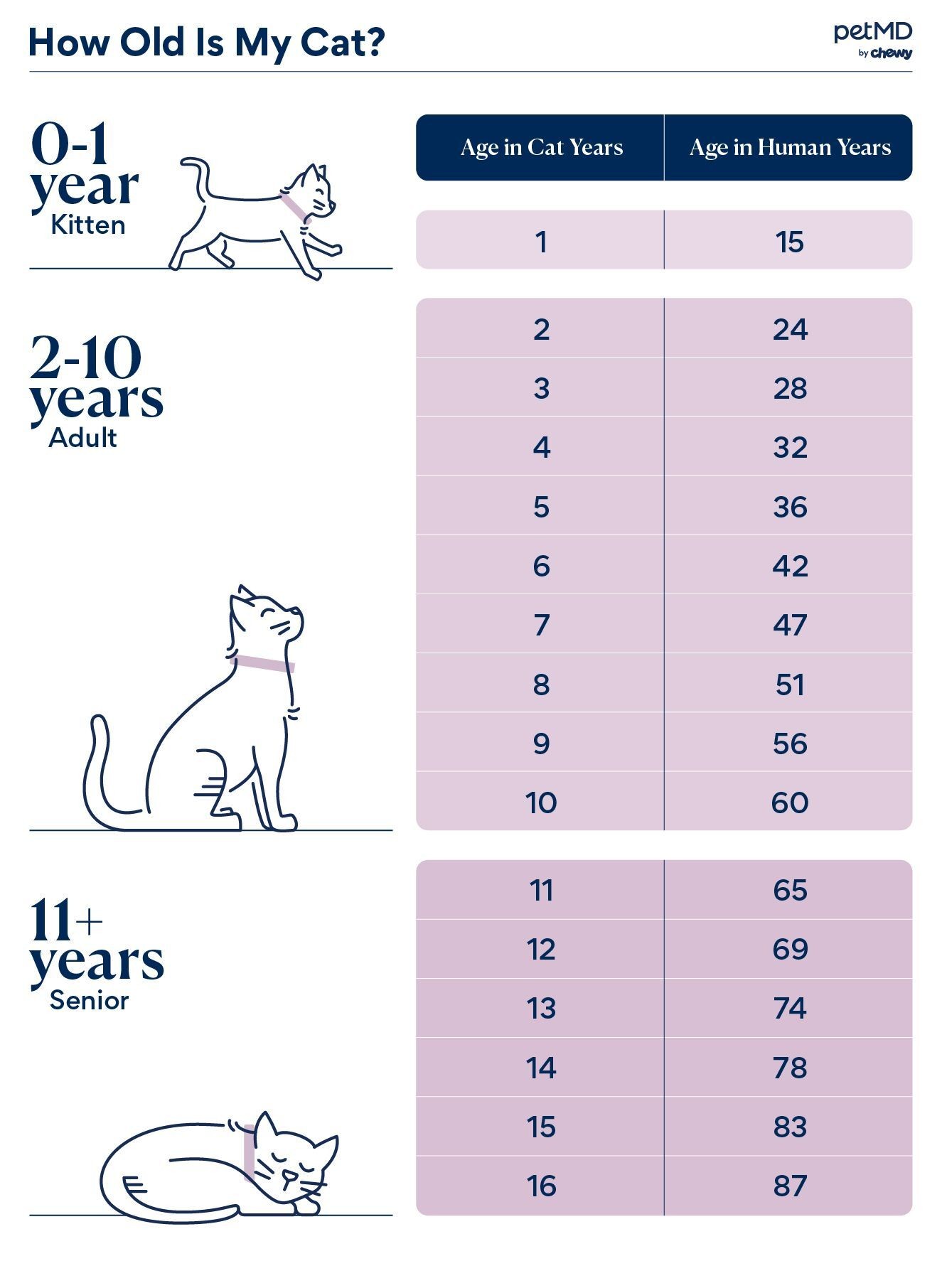Cat lovers often celebrate their feline friends’ birthdays, recognizing them as cherished family members. However, a yearly celebration might not fully align with the unique way cats age, which differs significantly from humans, especially across their lifespan.
“Converting cat years to human years offers a valuable perspective on our cat’s aging journey in relation to our own,” explains Dr. Mary Gardner, DVM, a respected veterinarian and co-founder of Lap of Love Veterinary Hospice. “As humans enter their senior years, mobility can become challenging. Similarly, a cat aged 11 or older, which equates to approximately 60 human years, may face comparable age-related difficulties.”
Understanding this age conversion helps cat owners provide the best possible care at every stage of their cat’s life. So, how exactly do cat years translate to human years? Let’s decode the feline aging process.
Decoding Cat Years: It’s Not Always 7 to 1
The common myth that one cat year equals seven human years is a vast oversimplification. The aging process in cats is much more nuanced, particularly in their early years. Cats actually mature at a rapid pace initially, slowing down as they get older.
According to the American Veterinary Medical Association (AVMA), a cat’s first year of life is equivalent to about 15 human years. By their second birthday, a cat is approximately 24 in human years. After these initial rapid years, the aging process moderates. For each subsequent cat year, they age roughly four human years.
Interestingly, the breed of your cat has minimal impact on their aging rate. Whether you have a Persian, Siamese, or a mixed breed cat, their aging trajectory is relatively consistent.
This accelerated early aging explains why kittens reach maturity so quickly. They can reproduce within their first year, a feat unimaginable in human development terms. Understanding this non-linear progression is key to accurately assessing your cat’s life stage in human terms.
Cat Age Chart: From Kitten to Senior in Human Terms
To easily understand your cat’s age in human years, refer to the chart below. This provides a quick reference to help you gauge where your feline companion is in their life journey.
 Infographic chart showing cat age conversion to human years, from kitten to senior, highlighting the rapid aging in early years and slowing down later in life for better understanding of feline life stages
Infographic chart showing cat age conversion to human years, from kitten to senior, highlighting the rapid aging in early years and slowing down later in life for better understanding of feline life stages
This chart illustrates the significant jump in age during the first two years and the gradual progression afterwards. Use this as a guide to better understand your cat’s life stage and anticipate their changing needs as they mature.
Determining Your Cat’s Age When Adoption History is Unknown
Many cat owners adopt their feline companions without knowing their exact birthdate, often celebrating a “gotcha day” instead. However, knowing a cat’s approximate age is vital for providing appropriate, age-specific care. Veterinarians are skilled at estimating a cat’s age using several physical indicators.
According to PetMD, vets often consider these factors to determine a cat’s approximate age:
- Teeth: Dental examination is a primary indicator. Kittens’ baby teeth erupt around 2-4 weeks and are replaced by permanent teeth around 3-4 months. Adult cats will show tartar buildup over time, with significant tartar indicating older age. Missing teeth can also be a sign of older cats, though dental health varies.
- Coat: Younger cats typically have a soft, fine coat. As cats age, their fur may become thicker, coarser, and lose some of its sheen. Grey hairs may also start to appear, particularly around the face, though this is less pronounced than in humans.
- Eyes: A young cat’s eyes are usually bright and clear. Older cats may develop cloudiness in their eyes, which is often age-related lenticular sclerosis and generally doesn’t significantly impair vision.
- Muscle Tone and Body Condition: Kittens and young cats are usually lean and muscular. Older cats may lose muscle mass and tone, and potentially gain or lose weight depending on their metabolism and activity levels.
By assessing these factors in combination, a veterinarian can provide a reasonably accurate estimate of your cat’s age, even without a known birthdate. This estimation is crucial for tailoring healthcare and nutritional plans to your cat’s specific life stage.
Cat Lifespan: Living Longer and Healthier
Thanks to advancements in veterinary medicine, improved feline nutrition, and the increasingly strong bond between humans and their cats, our feline companions are enjoying longer lifespans than ever before.
“The average lifespan for a cat is now around 12 to 15 years. Purebred cats tend to live slightly shorter lives, averaging around 12.5 years, while mixed-breed cats often live a bit longer, closer to 14 years,” Dr. Gardner notes. However, many indoor cats, with proper care and nutrition, can live well into their late teens and even early twenties.
Understanding your cat’s age in human years and their potential lifespan empowers you to provide optimal care at every stage of their life. From kittenhood to their senior years, each phase requires adjustments in diet, healthcare, and environmental enrichment to ensure a happy, healthy, and long life for your beloved feline family member.
Featured Image: iStock/Drazen_